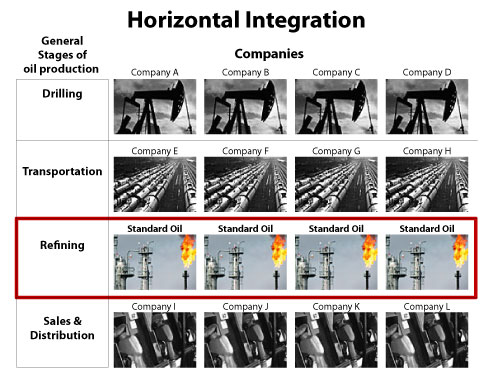Human Capital vs Physical Capital: What’s the Difference?
маркетс60 вход: ИнстаФорекс услуги трейдинга на Форекс
May 25, 2021How xcritical, acquired amid COVID chaos, fared in its first year under Intuit
June 18, 2021
It comprises of physical or tangible, human-made products that help in the procedure of making goods or services. The buildings, machinery, vehicles, office or warehouse, and computers that a corporation retains are all as belonging of its physical capital. Physical capital is tangible and substantial, difference between physical capital and human capital i.e., it is possible to physically or feel, touch, taste, and see, and on the other side, human capital is intangible. Human capital’s value is commonly assumed, as opposed to physical capital, which is easily discovered on the balance sheet (and in the notes to the balance sheet).
Do You Have A Sense Of Belonging At Your Work? – Forbes
Do You Have A Sense Of Belonging At Your Work?.
Posted: Tue, 08 Aug 2023 16:28:33 GMT [source]
Difference between Physical Capital and Human Capital-Furthermore, human capital is not only valuable to individuals but
also to organizations and societies as a whole. C) human capital is not physical; an example of human capital is education. Physical capital is generally movable, but more or fewer limits arise out of trade obstacles mandatory by various countries or states. But, when it turns to the movability of human capital, it is not entirely movable among countries, as movability limited by culture and nationality. The migration policy within the country should also be flexible in order to give the human capital room to self-augment. Individuals and their families should be able to migrate without any excessive restrictions so that they can be able to adapt to changes in job opportunities (2).
In contrast, ventures that are predominantly people-oriented might spend more on human capital. Whereas management of physical capital is mostly non-personal and generic, that of human capital is personal and customized in nature. For example, equipment and tools undergo routine checks and repairs to ensure they are in the right form and shape for their intended use. Employees on their part require well thought out and tailor made management initiatives such as team building activities and trainings to ensure morale and productivity at the work place. When managing your staff creativity and spontaneity is essential, on the other hand managing working tools is relatively standard and follows a set out protocol. Difference between Physical Capital and Human Capital-Physical capital is an essential
component of the production process, alongside labor and technology.
Difference between Physical Capital and Human Capital with Table
A beverage manufacturing firm with a specific bottle design, for example, may suffer from the resale of a bottle-making machine because the unit can only create a single type of bottle. However, it is important to note that the ability of human capital to self-augment is dependent on the health of the employees, training opportunities, and migration opportunities (2). Thus, it is essential to invest heavily in improving health facilities in order to increase the strength and vitality of the employees, as well as their life expectancies.

Capital is a term that refers to the resources, both tangible and intangible, that an individual, firm, or nation has at their disposal to produce goods and services. Two main types of capital are physical capital and human capital, each of which plays a critical role in the production process. In this article, we will explore the difference between physical and human capital, and how each type of capital contributes to economic growth and development. Also, we are going to cover their examples and key differences with the help of a table and key points. In conclusion, physical and human capital are two critical types of capital that play a significant role in the production process and economic growth.
Knowledge Capital
Over time economic productivity will increase and different sociocultural, economic, technological and environmental factors will aid this process. Learn more about examples of innovation, human and physical capital and how technology increases productivity. SkillBuild employs artificial intelligence (AI) technology to equip students and job seekers with the skills needed to qualify for growing positions in technology. This free program helps people from all walks of life build their human capital. With this initiative, IBM ensures that everyone has an equal opportunity to obtain the skills and knowledge required for a position in the IT industry. Harvard University is not Harvard University because of its crimson logo.
- We have plenty of human resources but to make them into human capital it is essential to invest in human capital.
- When one wants to start a company, a huge amount of physical capital is invested in the initial stage, so that the company can mark its existence in the marketplace.
- Simply put, the human capital of any given venture is the economic value that its employees add to it (1).
- Physical capital plays a crucial role in the production process, as it allows firms to produce goods and services more efficiently.
In most circumstances, capital refers to a company’s tangible assets. The physical capital formation is mainly an economic and
technical process. It is tangible and can be easily sold in the market like any
other commodity.
Emotional Capital
Physical capital refers to factors of production that foster the manufacturing process of raw materials into finished products. Physical capital examples are machinery, computers, tools, and equipment among many others. Physical capital is consists of all non-human resources utilized in the production of other goods and services.
It cannot be easily changed to cash because it is fixed and reusable (e.g., buildings and machinery). Although it is not consumed during the manufacturing process, its long-term worth can fluctuate and, in most circumstances, decrease over time. Because physical capital is illiquid, adding value to it is difficult. The manufacturing method and goal may necessitate the customization of equipment and machinery. As a result, the organization is having difficulty determining the value of its equipment and apparatus.
Chapter 6: Rural Development
Human capital is not sold in the
market; only the services of the human capital are sold and, hence, there
arises the necessity of the owner of the human capital to be present in the
place of production. It is therefore paramount for businesses to form and have a contextual understanding of the differences between human and physical capital sources available to them. On the contrary, human capital is relatively a new concept, which implies the collection of an individual’s skills, abilities, talent, knowledge, etc, used by the company to meet out its long term goals.

Human capital formation s to be done through conscious policy formulations. There should also be a provision of primary, secondary, and tertiary education to the entire population to guarantee a highly skilled and educated populace (3). The government of the day should also put in place literacy programs for adults in order to cater to those adults who might have missed any formal education. Human capital is not perfectly mobile between countries as
movement is restricted by nationality and culture.
Key Differences Between Physical Capital and Human Capital
It is not owned by the company, but by the employees, which they rent to companies for adequate consideration. Human capital is a nonphysical fixed asset or value not recorded on a firm’s financial statement or balance sheet. It categorized as the financial worth of a worker’s expertise and experience. It comprises belongings such as education, intelligence, training, health, skills, and additional features of companies’ value, like punctuality and loyalty. One of the key characteristics of human capital is that it is unique to each individual and cannot be replicated.
Human capital is significant as it perceived to growth productivity or output, and therefore, success or profitability. So the further a business invests or put in for its workers, the more profitable and effective it might be. The creation of physical capital is a cost-effective and technical procedure. While the creation of human capital is a communal or public procedure, however, it is also a result of focused conclusions led by the capitalist in this concern. Human capital is crucial for
economic growth, productivity, and competitiveness.

Analysts can assess the impact of human capital on operations by employing efficiency ratios like return on assets (ROA) and return on equity (ROE), in addition to goodwill (ROE). The balance sheet summarises the value of all physical assets as well as some non-physical assets. It also summarises the capital raised to pay for the assets, which includes both physical and human capital. Physical capital is made up of manufactured goods that aid in the production process. Cash, real estate, equipment, and inventory are examples of physical capital. Physical capital values are listed on the balance sheet in order of solvency.
As long as the management of physical capital is mostly non-personal and generic, that of human capital is personal and customized in nature. Physical capital lacks a similar capability, while human capital has the potential to evolve and self-augment. Physical capital is different from
financial capital, which refers to the monetary resources and funds available
for investment and production. While financial capital represents the
purchasing power or wealth used to acquire physical capital, physical capital
represents the actual physical assets and infrastructure used in the production
process.
Human Capital vs Physical Capital
For this purpose the entrepreneur, finds out the expected returns from the range of investments and then the one, generating relatively higher return is chosen. Therefore, the ownership of physical capital is a result of planned and conscious decision of the entrepreneur. Take a read of the article excerpt that attempts to shed light on the differences between physical capital and human capital. Physical Capital is acclimated with mean the corporation’s non-human belongings such as plant and equipment, building, office supplies, computers, etc. that help in the making of products and services.
Additionally, human capital is mobile, meaning that people can move from one job to another, taking their knowledge and skills with them. This mobility makes human capital an important factor in determining a country’s competitiveness and ability to attract investment. It can be regarded as tangible investments in the production of a good that can be employed several times or at least over multiple accounting periods.
- If seen from the economic development point of view, human resources are important.
- Physical capital is different from
financial capital, which refers to the monetary resources and funds available
for investment and production. - The tools, equipment, plant, and machines comprise the physical capital of the company, and one can easily see and feel these components (3).
- Human capital is not sold in the
market; only the services of the human capital are sold and, hence, there
arises the necessity of the owner of the human capital to be present in the
place of production.
Intangible assets can’t be touched, but they are often represented by a legal document or paper. Therefore, it is important to consider your business context and operating environment, for informed decision making when it comes to the combination of physical and human capital. This will, in turn, enhance productivity, effectiveness, market relevance, and efficiency in business operations, and lead to profitability.
